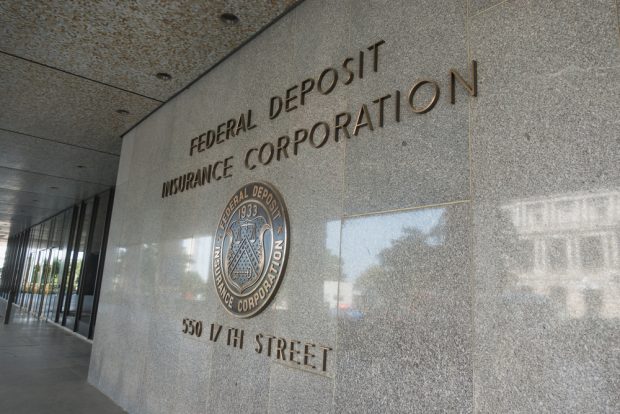ATLANTA – As fast as new vendors are discovering the credit union market, others are being merged away into bigger firms. In the latest consolidating event, Harland has announced its plans to acquire Liberty for $160 million in cash – a deal that will in one way or another affect thousands of credit unions. The two firms are best known in credit union land for their strong check printing business, but in anticipation of the decline of the check both have diversified their product lines to be more slanted to technology offerings. Liberty, which was founded in 1985 by chairman Dave Copham, now has some banking clients (less than 10% of revenue comes from banks), but traditionally has been a pure credit union company. It started its initial push into technology products with the acquisition of credit union data processor FiTECH in 2000. This gave Liberty an immediate presence in the competitive DP market, however it didn't last long, with Liberty later selling FiTECH to OSI in 2003. In 2001 Liberty became an Internet banking player with the acquisition of Cavion Plus. It was a heated battle to win the Cavion deal from EDS, which came in at the eleventh hour with an attractive offer. Liberty quickly turned the bankrupt Cavion into a winner, adding 50 additional CU clients in just one year of ownership. Today Cavion has over 250 Net banking clients and provides Web hosting for over 900 credit unions. In 2003 Liberty went even further into the online arena with the acquisition of CUNA Network Services. The biggest thing CNS brought to Liberty was Web hosting and home banking CU clients. CNS was also into virtual private networks, smart chip technology and security testing, but those product lines haven't been as fertile. Liberty is also into marketing. Just last year it acquired MyDAS marketing and with it some 150 credit union clients. It also has a host of in-house direct mail and one-to-one marketing products through its ALTAFI marketing subsidiary. Liberty, in addition to the Liberty brand, strongly markets three other brands – ALTAFI, Cavion Plus and MyDAS. With these other businesses and product lines, Liberty now garners 75% of its revenue from checks and printed products. While this sounds high, that number has gone down from the high 90 percentile just a decade ago. Liberty had revenues of $135 million last year. Harland is a much bigger firm with 5,000 employees and 2004 revenue of almost $800 million. Like Liberty, Harland also gets the majority of its revenue from printed products, but it is declining. Its Printed Products division, which includes checks, forms, direct marketing and analytic services, accounted for 61.2%, or $488.7 million, of the company's 2004 revenue. This is a decrease of almost $28 million from 2003. On the other hand revenue from Software and Services sales are up at Harland. They accounted for 24.3% of revenue last year, or $193.8 million, that's up roughly 10% from 2003. Some of Harland's best-known technology solutions in the credit union industry, delivered through Harland Financial Solutions, are its ULTRADATA core system, its Touche CRM products, and its ENCORE! and EZTeller branch automation products. ULTRADATA was its first major CU core processing acquisition. Other notable CU-related acquisitions include Premier Systems Inc., which was basically a firm running the ULTRADATA core in a service bureau environment. Recent acquisitions include Cincinnati-based Intrieve, which offers core processing, online banking and item processing solutions. Another major deal occurred back in 2002 when it acquired INTERLINQ, a provider of loan origination products. Harland is clearly committed to the CU core processing market. At press time it just announced a new service bureau core system, CuServ Evolution-ASP, aimed at small CUs. So just how did these two firms that appear to be on the same path in a lot of ways get together? Liberty CEO Stan Hollen said Harland approached Liberty and the synergies were too strong to ignore. "These companies are very compatible. The cultures are compatible, the product sets are compatible. Neither of us sell directly to consumers. We work through and to financial institutions. We're both into digital printing," said Hollen. Digital printing was touted by both Harland and Liberty because it allows the companies to economically print one-to-one marketing materials for individual members based on their needs, rather than generic, mass-market mailings. John Heald, president of the Printed Products Division of Harland, said believe it or not the two companies aren't as big of rivals as people may think on the check printing side. "There's not a huge overlap. Their tendency was to focus on the small to medium-size credit unions. Our focus was much more on the large credit unions," said Heald. Though since Hollen came on board as Liberty's CEO in 2002, Liberty has added a few billion dollar CU check printing clients. Heald said while check usage has gone down, Harland always wants to be in the check business. "We want to be the last check printer standing. It still has a lot of legs," said Heald. He noted much like CUs want a member's share draft business to try and build other relationships, Harland believes if it has the check printing business of financials, it's easier to penetrate them with other product lines. So will the Liberty name that Copham built up from scratch go by the wayside? No way says Heald. "We and everyone in the credit union industry have a huge respect for the Liberty name. We want to not only maintain that brand, but build on it," said Heald. Hollen said that was important for Liberty's leadership. "The important thing that Liberty recognized is that the brand needs to stand in its own right. Cavion Plus and MyDAS are tagged as Liberty's companies. That will continue, the brands will continue," said Hollen. As a Subchapter S corporation with an ESOP (employee stock ownership plan), Liberty's 700 employees will profit from the acquisition. Harland is paying cash for all shares of Liberty, so each employee's payout will be dependent on how much ownership they have in Liberty. Hollen said the biggest factor in ownership is tenure. "The good thing about this is all the employees will participate (in the purchase), and then they will have opportunities in a large publicly traded company," said Hollen. Liberty's majority owner is the Copham family. Founder Dave Copham is chairman of Liberty and his daughter Kristen is on the board. But almost a quarter of the company is owned by the employees. Hollen said even though he is CEO, as far as the ESOP payout goes, longer tenured employees can earn more than him. Hollen said Liberty's majority owners were very active in this transaction. As for how the credit union industry will react to a firm synonymous with credit unions, being sold, Hollen said the industry will understand the value proposition. "I think it will be well received. There are things that Harland didn't have that we have and vice versa. It makes for a stronger competitor," said Hollen. He noted that Liberty has a successful gift card program, which Harland has yet to get into. And on the flip side, Harland will be able to offer Liberty a range of commercial account products that are becoming more important to CUs as they court business accounts. [email protected]
© Touchpoint Markets, All Rights Reserved. Request academic re-use from www.copyright.com. All other uses, submit a request to [email protected]. For more inforrmation visit Asset & Logo Licensing.






